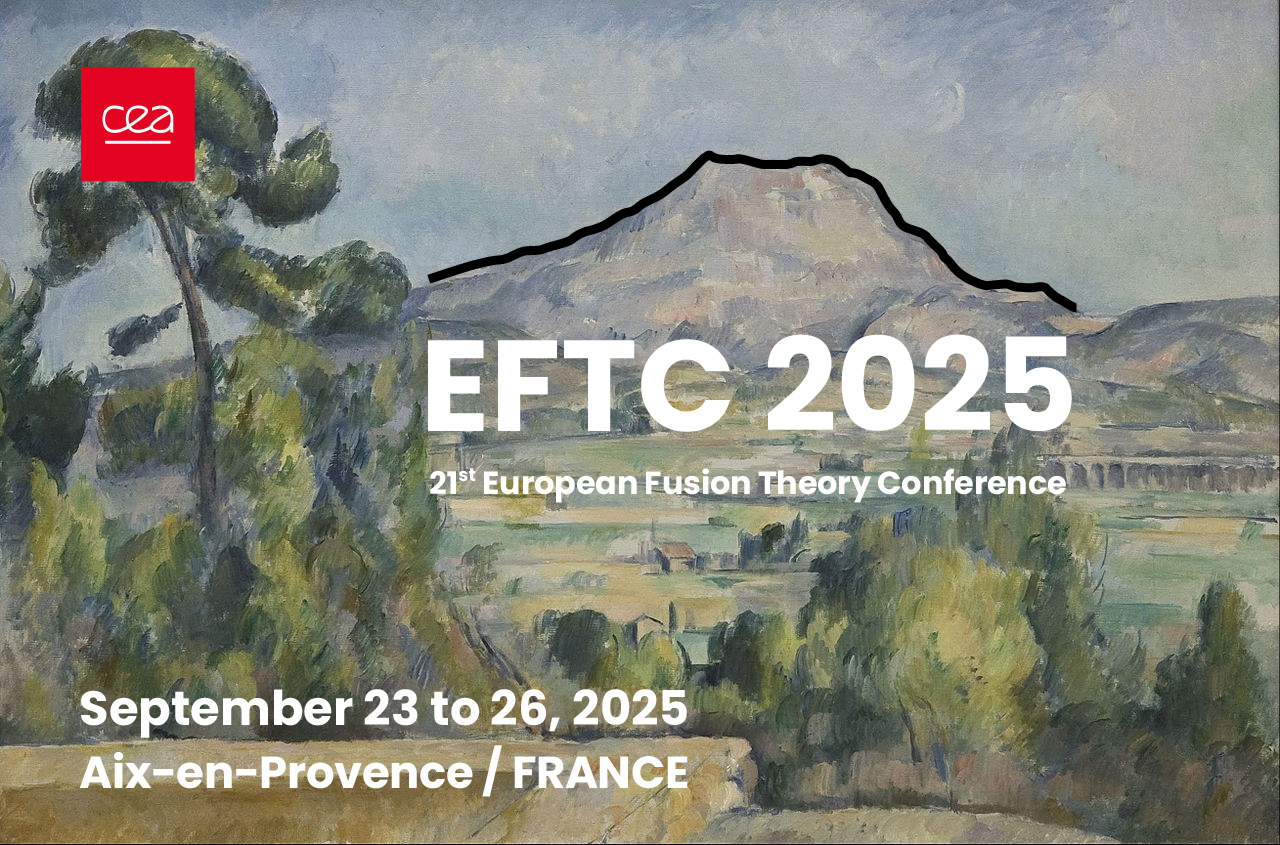Speaker
Description
The study presents global 3D simulations of a linear plasma device using the first-principles drift-reduced fluid code SOLEDGE3X. The effects of parallel currents on shaping the turbulent regime are investigated, focusing on the interplay between drift-wave and sheath-driven instabilities. In open field-line regions of a tokamak, sheath losses have traditionally been regarded as the sole driver of parallel instabilities. However, in high-density regimes - where elevated resistivity amplifies bulk parallel losses — drift-wave instabilities can also emerge, especially when collisionality is high and connection lengths are long. The scenario is even more complex if one considers the possibility that different dominant instability mechanisms are simultaneously present in distinct regions of the domain, so that only 3D models can capture the global picture.\
In this light, the present study aims to identify the plasma parameters range in which drift-wave turbulence overtakes sheath-losses in a linear plasma device. The device is modeled by a slab geometry with uniform, straight magnetic field-lines which orthogonally intersect a wall at both ends of the domain. Sheath (Bohm) boundary conditions are applied along the parallel direction at the end walls, whereas periodic boundary conditions are assumed in cross-field directions. A centrally located particle and energy source with a Gaussian cross-section is added, making turbulence essentially flux-driven. \
The onset of drift-wave turbulence is evaluated both analytically and numerically for several values of plasma resistivity and connection length, attempting to detect the critical values of the control parameters leading to a partial disconnection of the plasma column from the sheath. As expected, the results show multiple turbulent behaviors for long and resistive plasma columns: parallel modes are excited in the region far from the sheath, indicating that the underlying physics goes beyond simple flute-like dynamics. The distinction of "sheath-connected" and "resistive" cross-field planes along the domain enables a comparison with reduced 2D models, where an ad-hoc parallel closure must be chosen. Similarities and differences between the models are shown, thus highlighting the role of the true three-dimensional geometry even when the dominant parallel losses are established and the 2D model should reproduce the turbulent behavior. In this context, particular attention is given to the role of the third dimension - along the direction of the magnetic field - on drift wave dynamics, as in 2D models it is usually studied by imposing a prescribed parallel wave vector while 3D simulations can self-consistently capture the superposition of stable and unstable parallel modes.\
In high-density regimes, another key mechanism that becomes increasingly relevant is the interaction between plasma and impurities. The second part of this study extends the analysis to multi-species fluid simulations using the SOLEDGE3X code, applied to a linear configuration inspired by Magnum-PSI — a large linear plasma device designed to reproduce fusion-relevant edge plasma conditions. Overall, the goal is to advance the understanding of turbulent impurity transport in magnetized, collisional plasmas with open magnetic field-lines, where a comprehensive understanding is still missing.\
The analysis of flux-driven turbulence allows for the investigation of multi-species interactions without resorting to ad-hoc anomalous transport models. In this framework, the impact of the Zhdanov closure is investigated through the comparison with trace impurity simulations, where impurities are passively advected by the main plasma. The role of impurity charge, mass and concentration is addressed to identify regimes where significant changes in turbulent transport arise, thus offering clearer insight into the mutual interaction between main plasma components and impurities.

